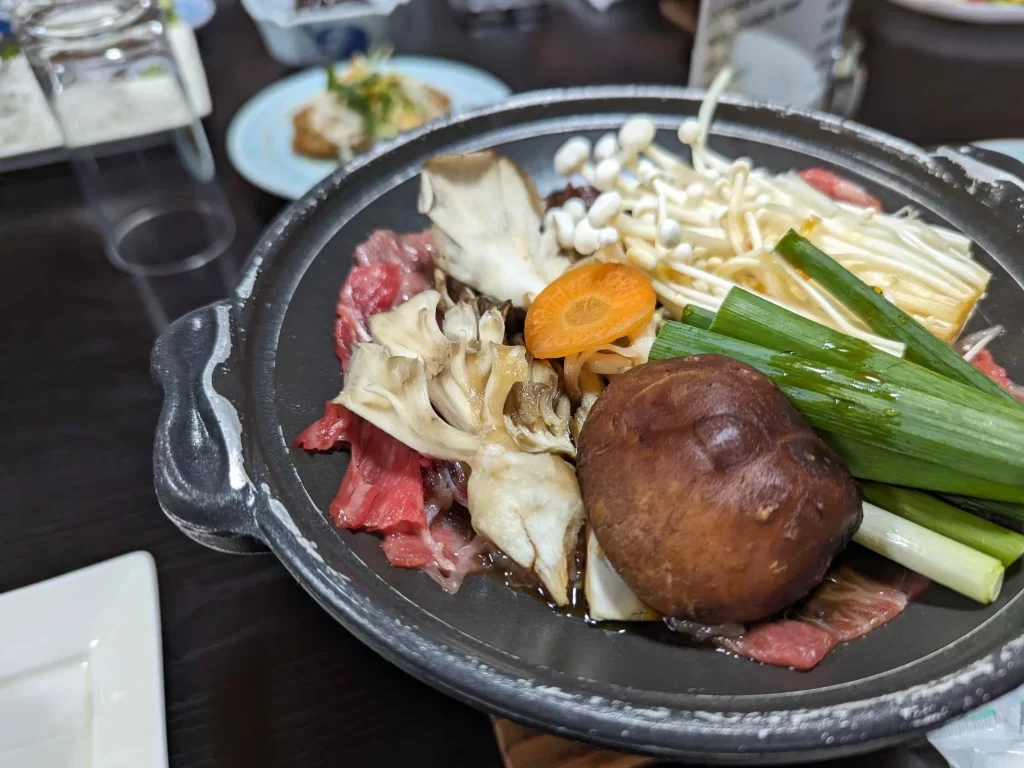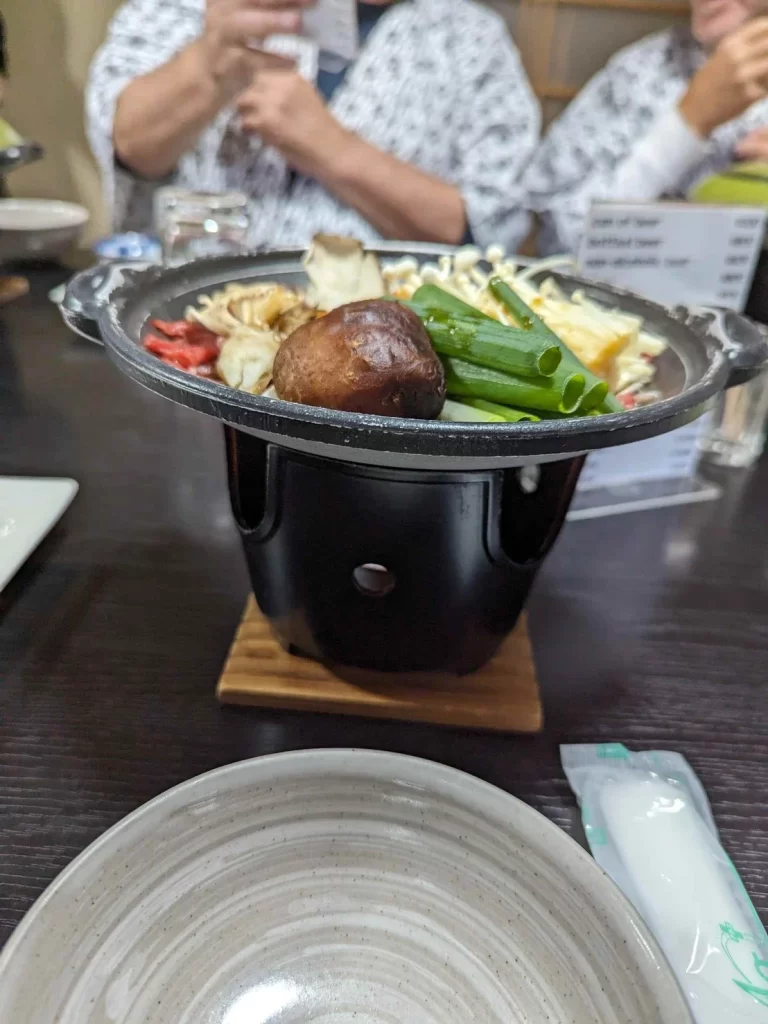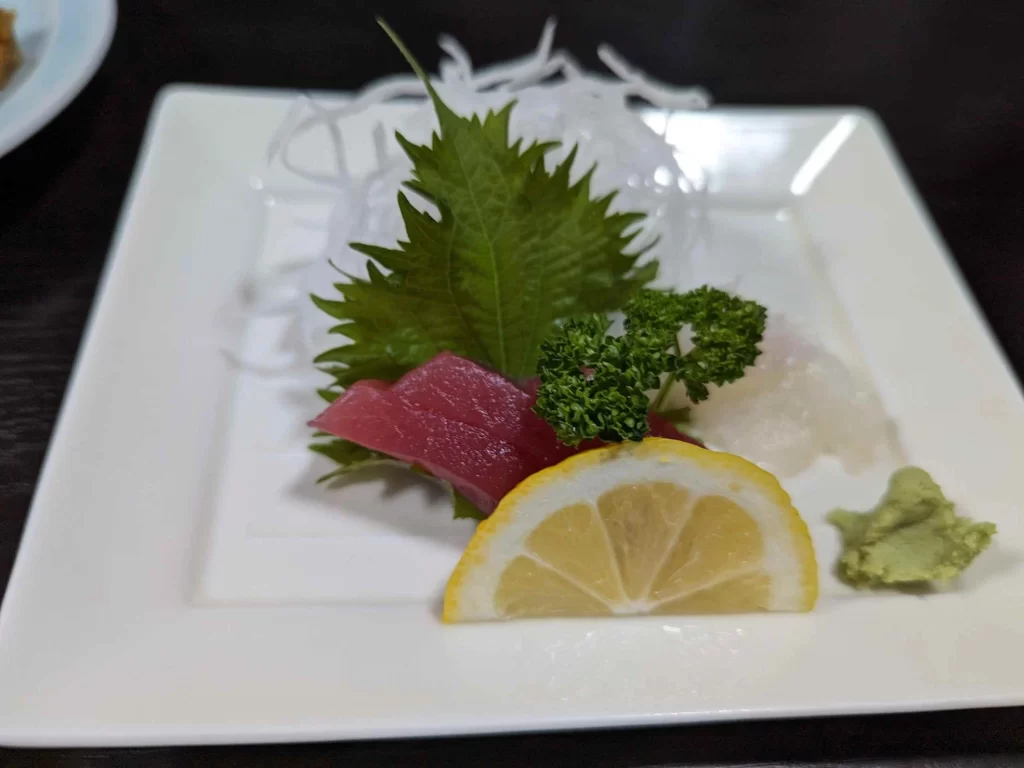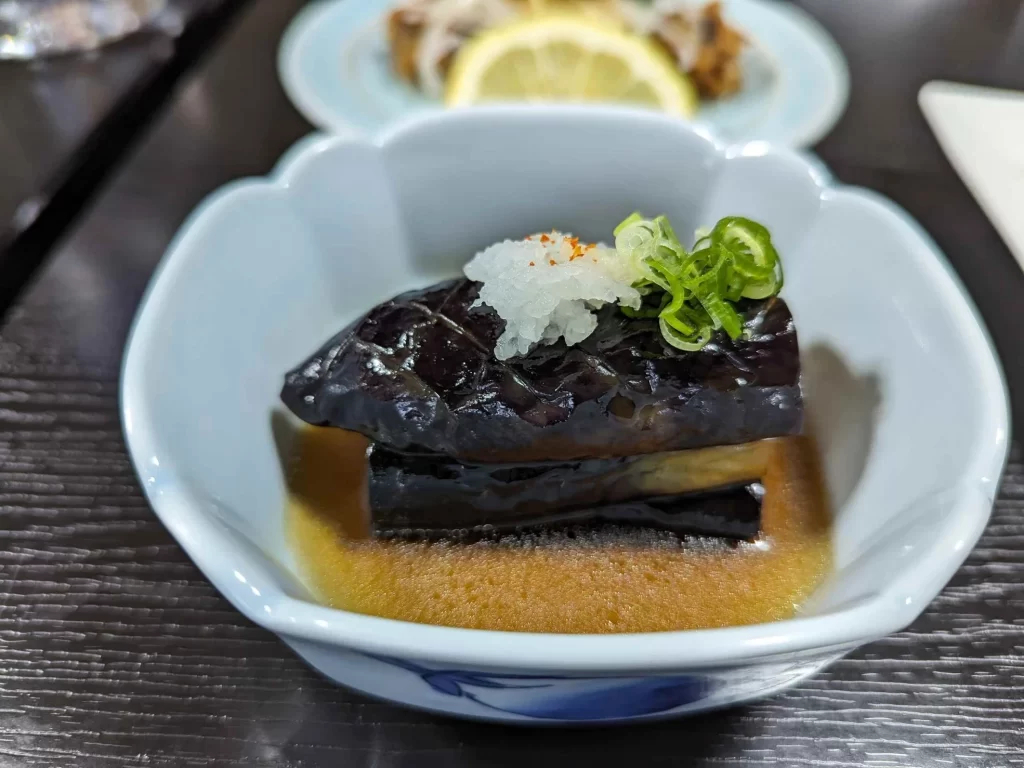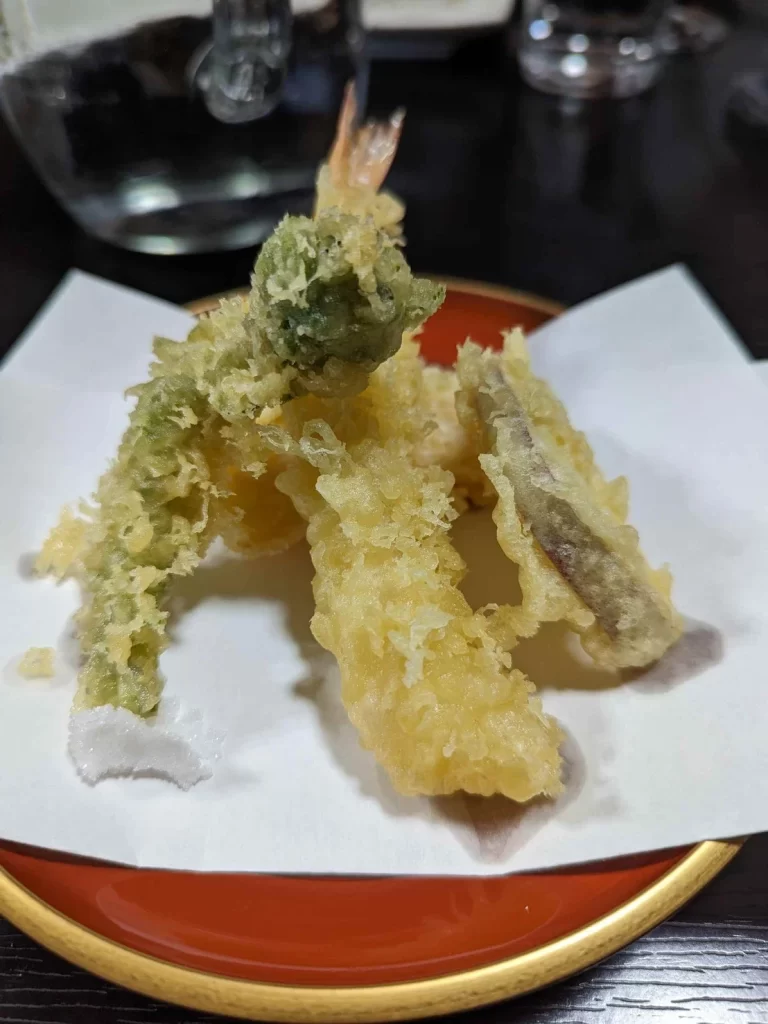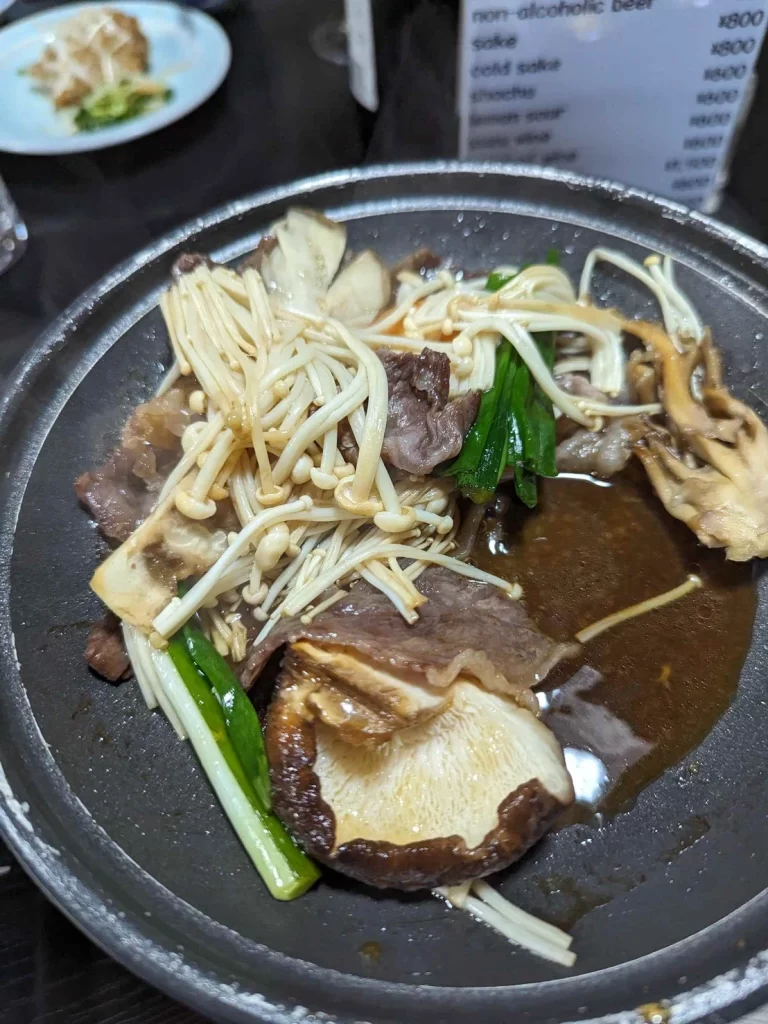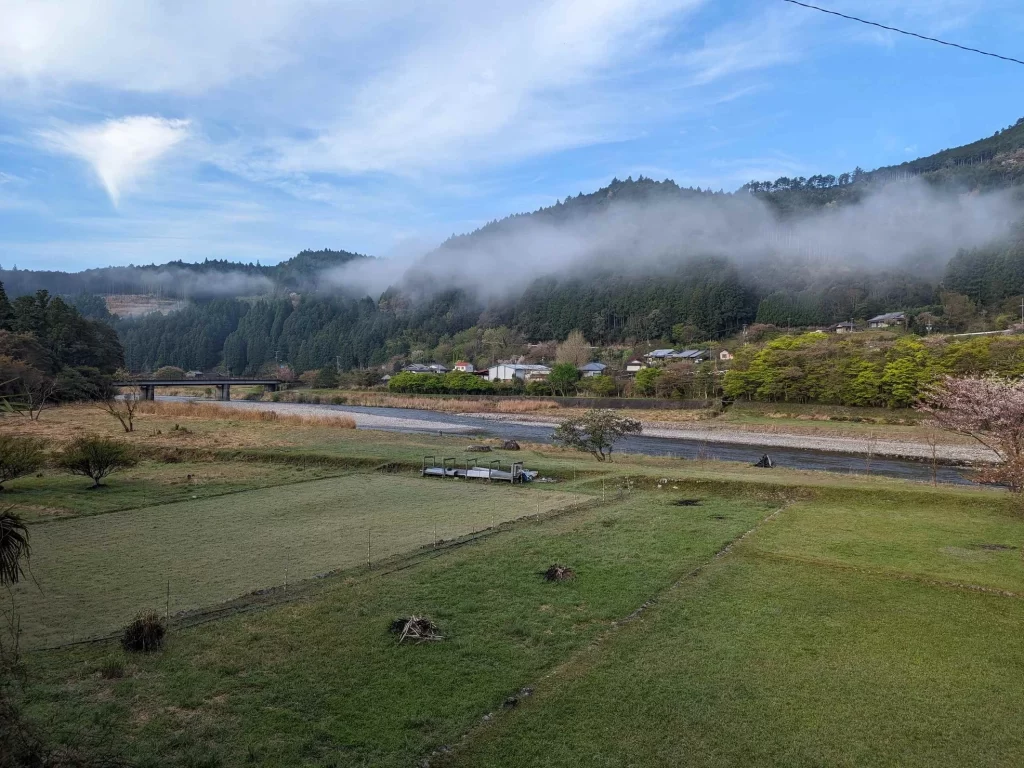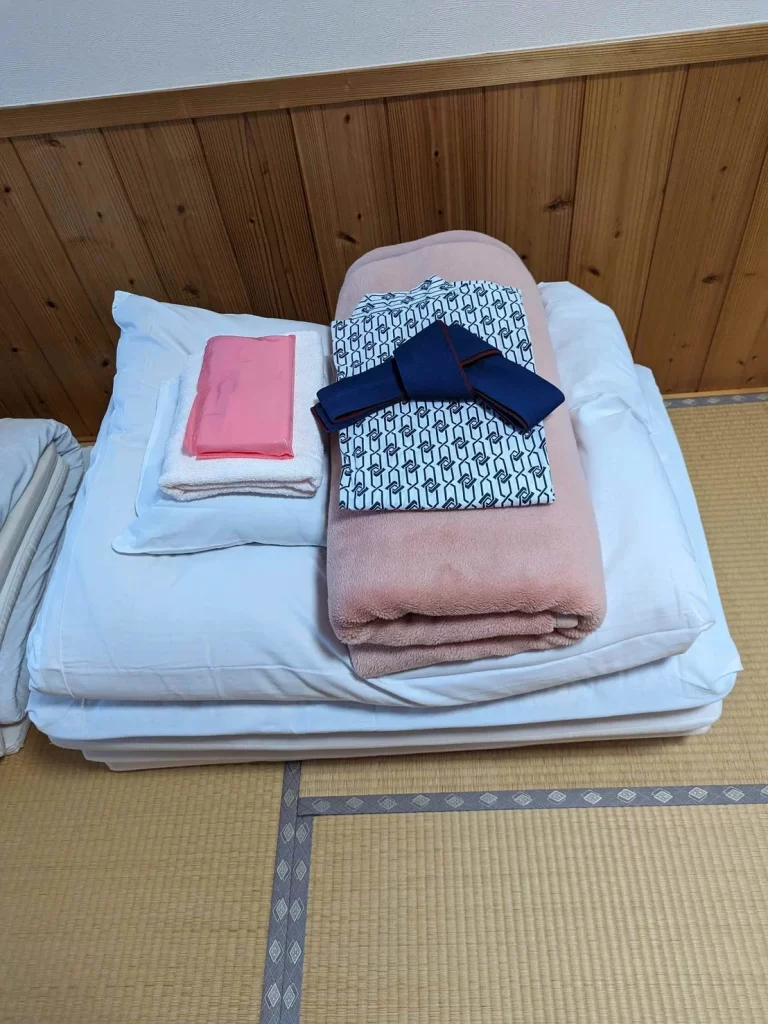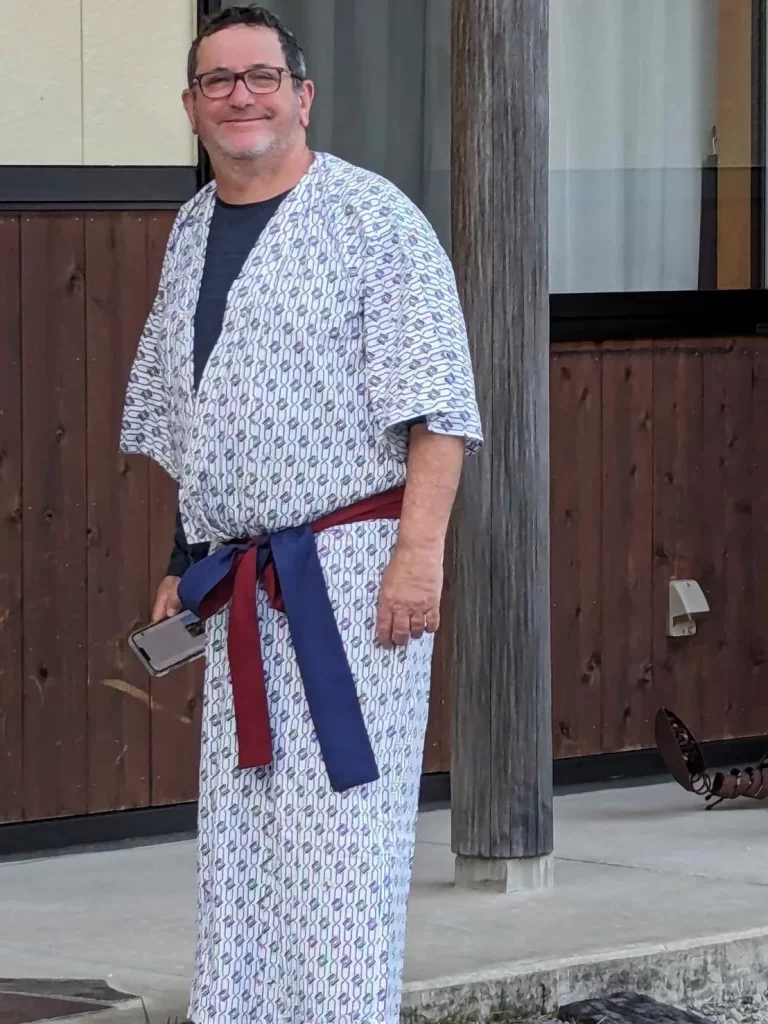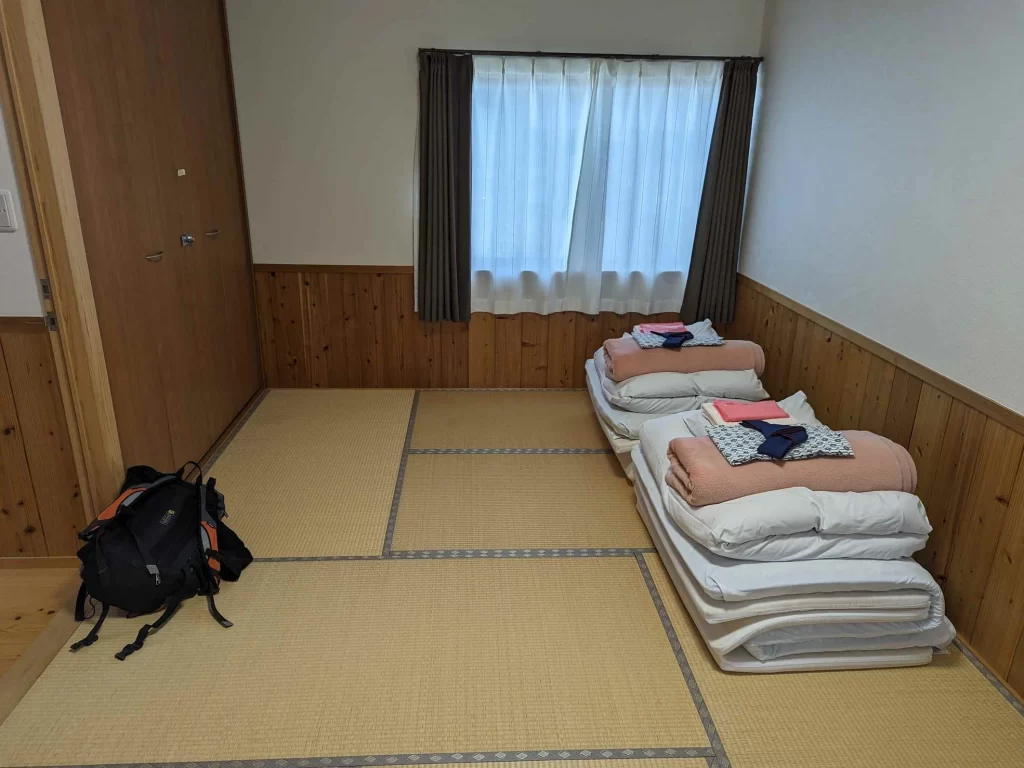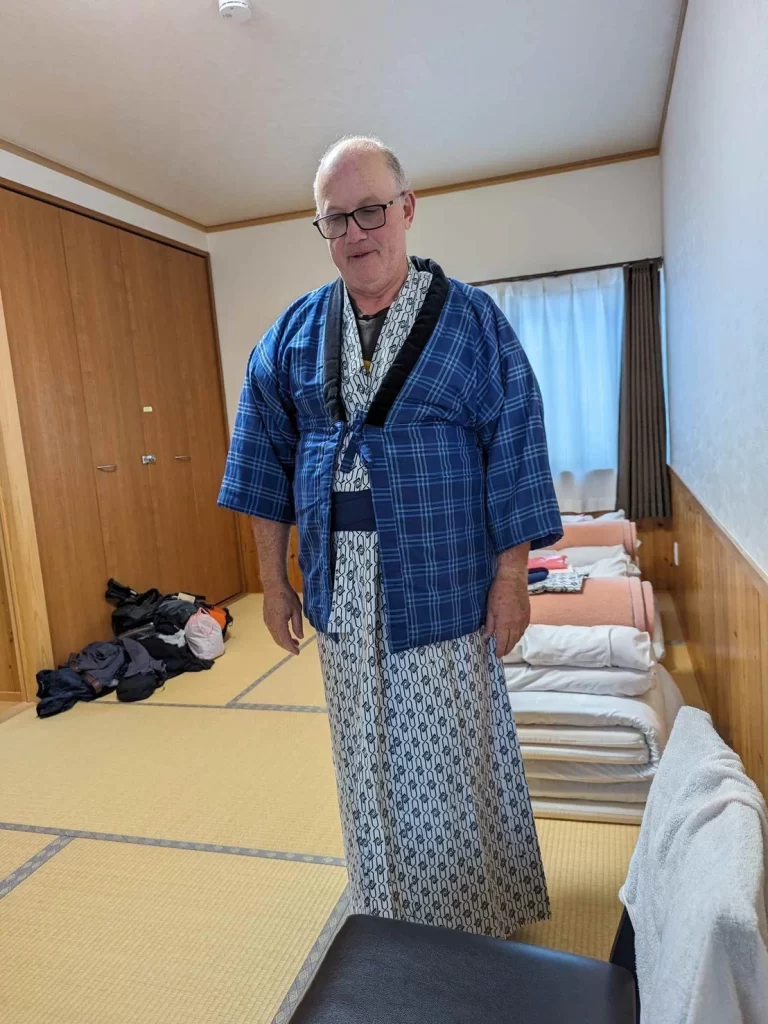Starting the Nakahechi Kumano Kodo
None of us woke feeling particularly refreshed as our very traditional accommodations turned out to be maybe a little hard core for us. The “futons” we slept on resembled doonas laid out on the floor and the pillows were like the wheat bags you heat in the microwave instead of a hot-water-bottle. Authentic maybe, but tough for us soft westerners.
We were transported to the Hidaka station bright and early, but had a few train and bus journeys until we actually arrived to Takijiri .The Kumano Kodo is actually a number of different pilgrimage paths, but the Nakahechi route is considered the main one, and we would be starting it today. The two previous days had been on the coastal Kiiji route, a lesser travelled one, hence the poorer signage and descriptions. The Nakahechi route is so heavily travelled and signposted that even we couldn’t get lost. We had already passed quite a few temples, shrines and oji’s (small prayer statues dotting the paths we were walking) on the Kijjii route, but the Nakahechi route is even more spiritual, as it ultimately leads to the Komano Hongu Taisha, one of the three grand shrines which are the focal points of the Kumano Kodo pilgrimage. The Kumano Kodo is so important to Japanese culture that its symbol, a three legged crow, is found on the breast of the jersey of the
Japanese national football team.

When we first started looking at walking the Kumano Kodo, we had planned to only walk the Nakahechi route which was physically more strenuous. The route that we ended up taking was a little easier, or at least had more options that allowed us to walk more or less depending on how we felt. The added bonus was that we experienced two very different areas, coastal and inland mountainous. So in short, it was totally correct deciding on the route we had chosen and if anyone is considering walking the Kumano Kodo, I would strongly recommend starting along the road less travelled, the Kijji route, and then continuing on the main Nakahechi route.
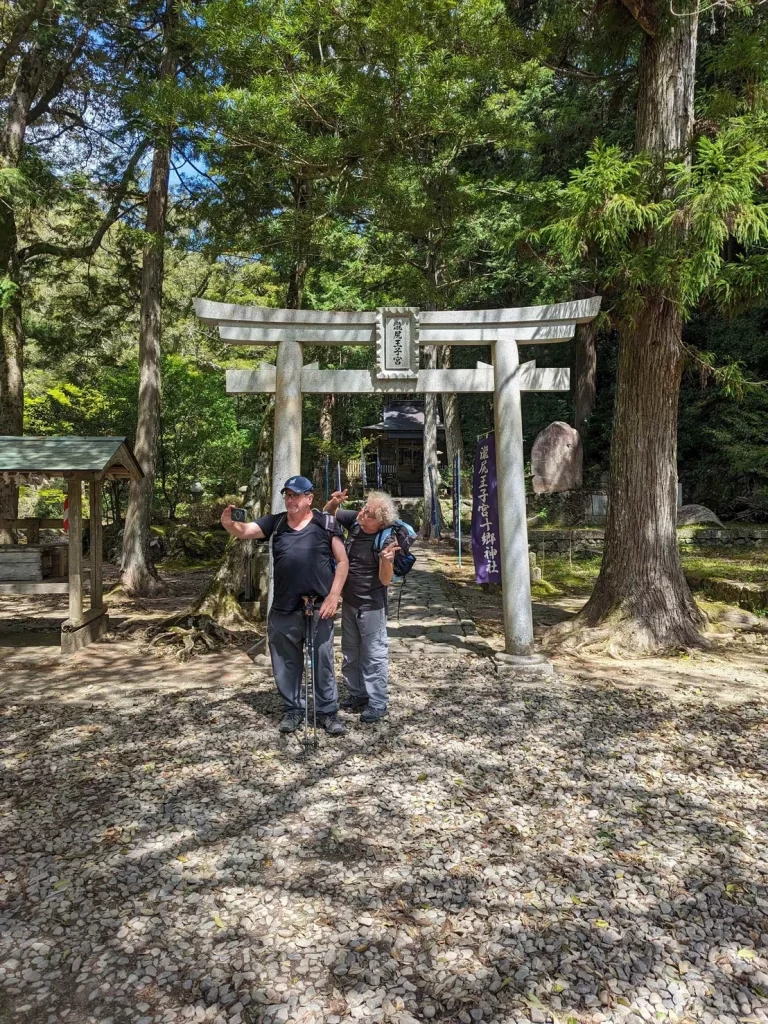
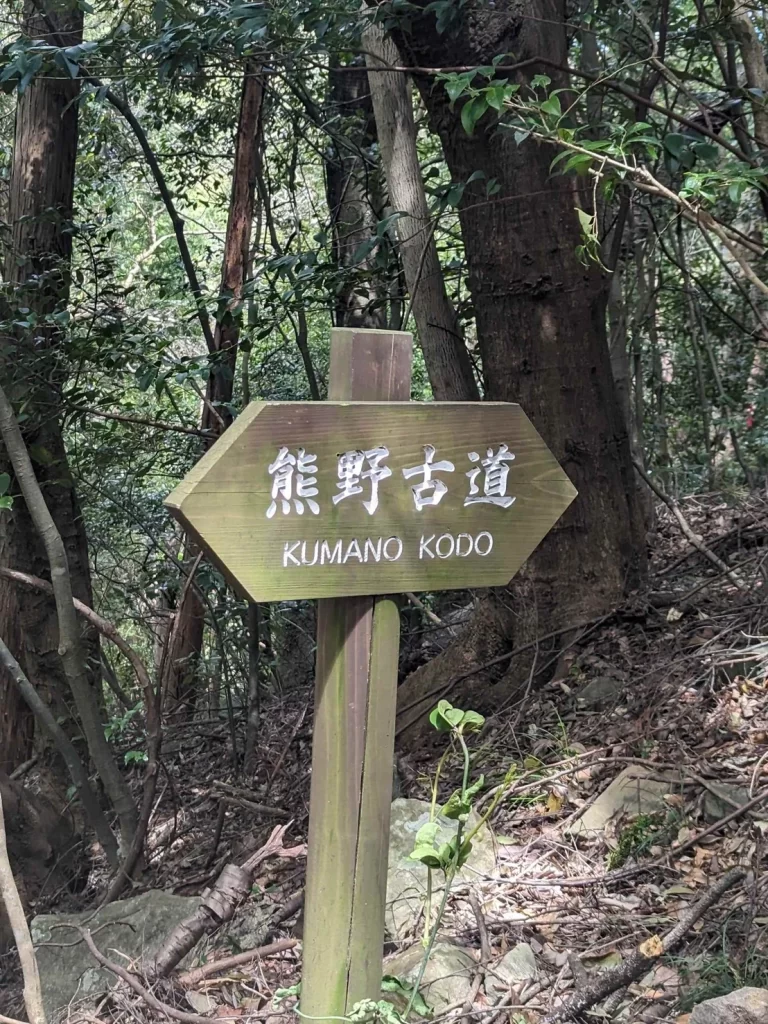
As I said earlier, we had buses and trains to take before we started walking. Public transport is great for an authentic slice of life, but when you want to get walking as early as possible and have already had a fair share of “authentic slice of life”, then it wasn’t quite so desirable. So in the end, we didn’t actually start walking until after 11.
Takijiri to Takahara
The Nakahechi route starts at Takijiri, where you pick up a “passport” that you stamp at various points, usually a shrine or oji, along the way. This is in keeping with the dual pilgrimage status attained if you walk both the Kumamo Kodo and the Camino de Santiago in Spain, where you also get a passport stamped along the route. These two routes are the only walking routes in the world with U.N. Cultural Heritage recognition. I’m not sure about us feeling like pilgrims, but we definitely continued to feel like little boys on an adventure and the essentially meaningless stamping of a route passport, other than it being a nice colourful memento, enhanced this little boys feeling.

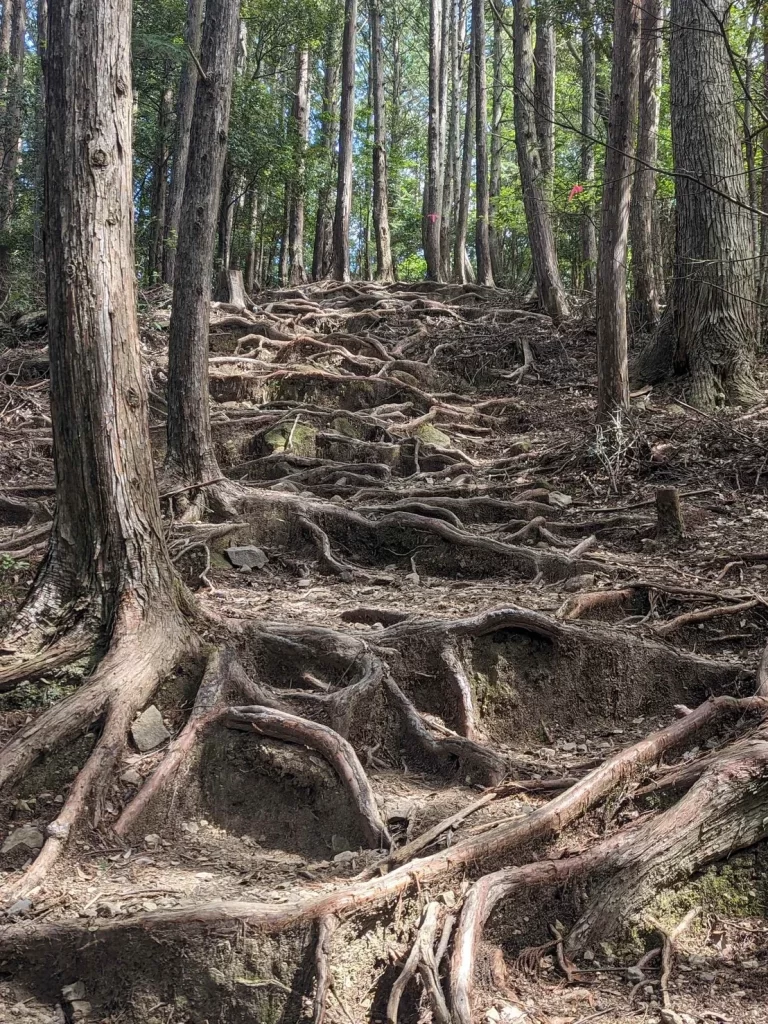
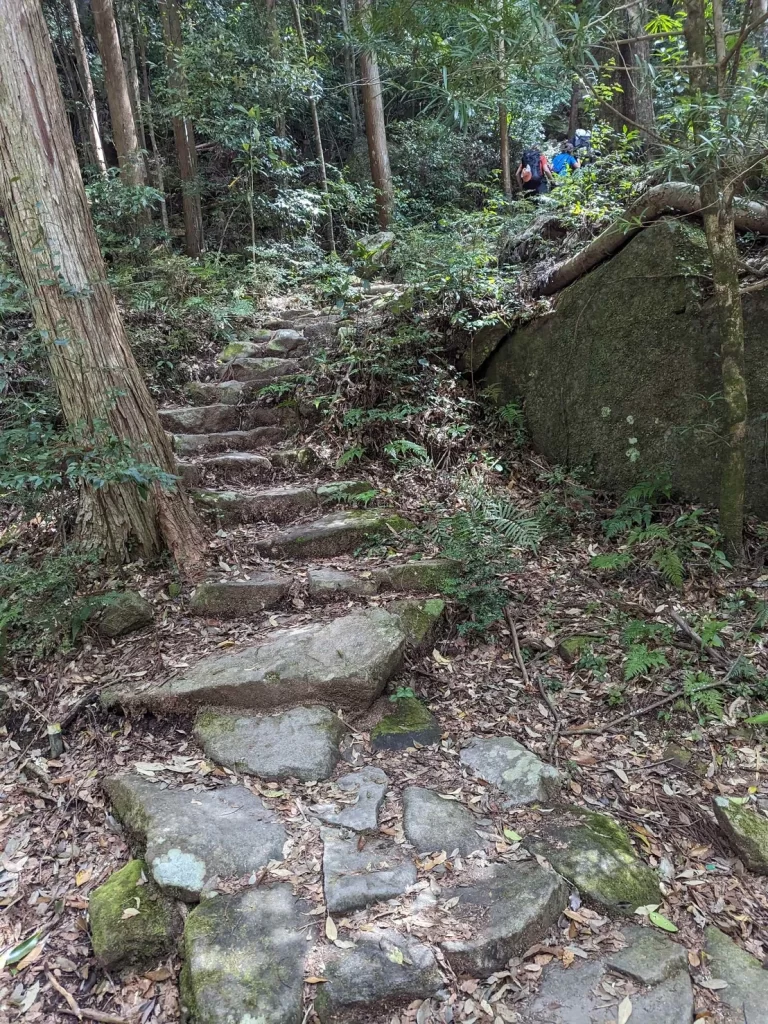
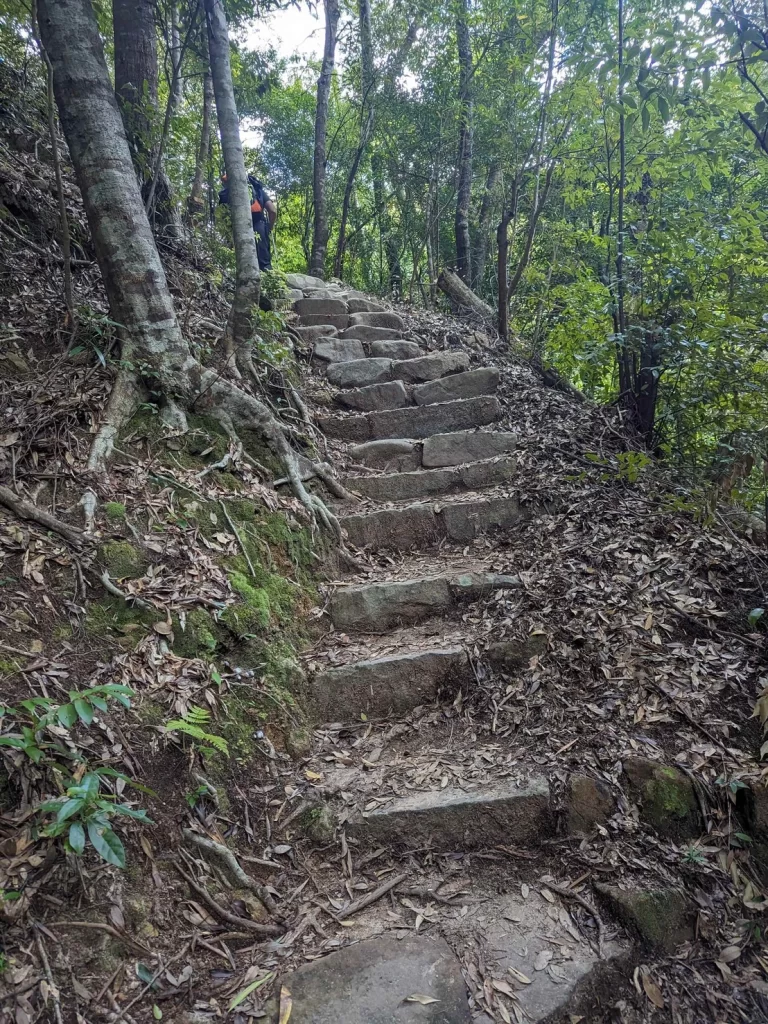
By the third day of walking, we were starting to recognise a pattern…starting the day with a long, gut wrenching, heart attack inducing uphill, just to remind us that we were on a pilgrimage trail and suffering is part of the deal. And if the previous day gave us perfectly located picnic tables as a reward for the steep climb, today we arrived upon a coffee cart (yes, really), overlooking a deep valley and mountains across the valley. The coffee vendor had no electricity to make espresso coffee. Instead he grinded each order by hand, filled a macchinetta with the correct proportions of coffee and water, placed the appliance on a gas stove and produced a delicious cup in perfect surroundings. Perhaps strangely, this quintessential Italian experience on top of a mountain pass on a Japanese holy route didn’t actually seem as incongruous as it might sound. In fact, it somehow just seemed right, even if it did entail quite a long wait and rest break. Oh well.
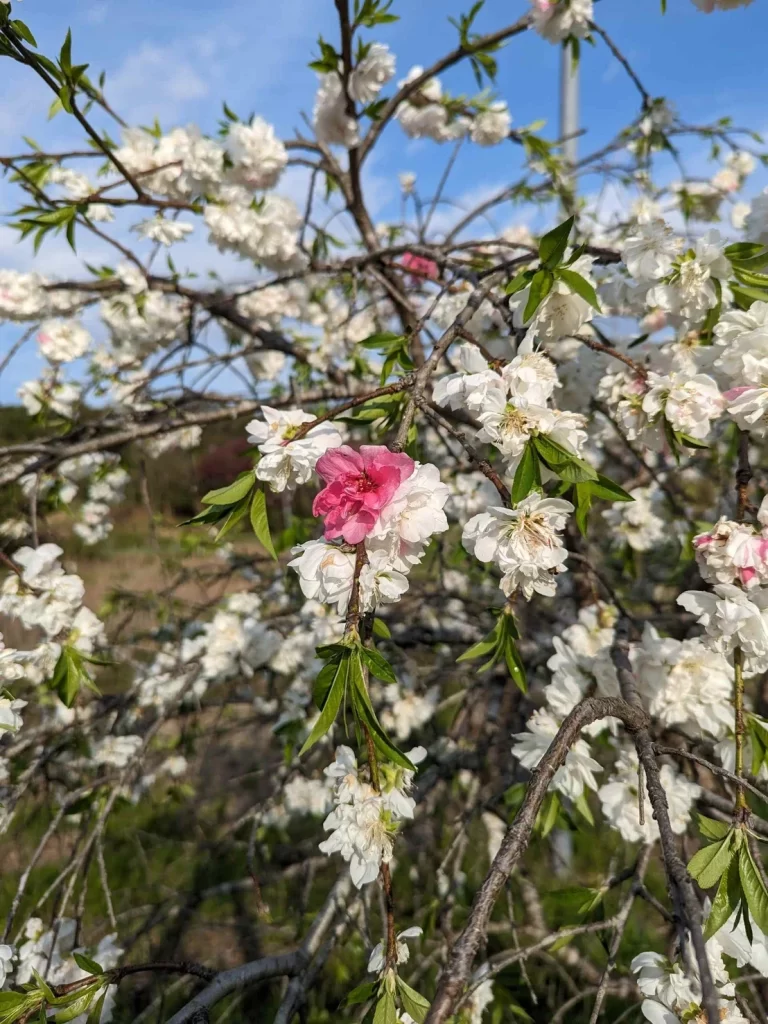
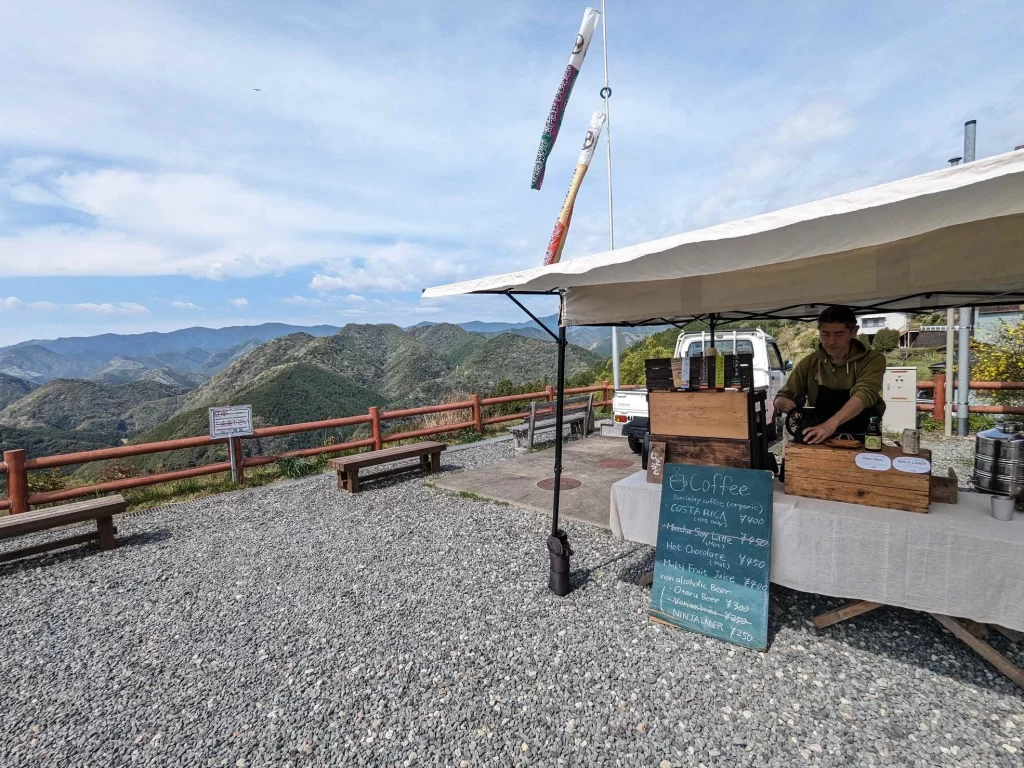
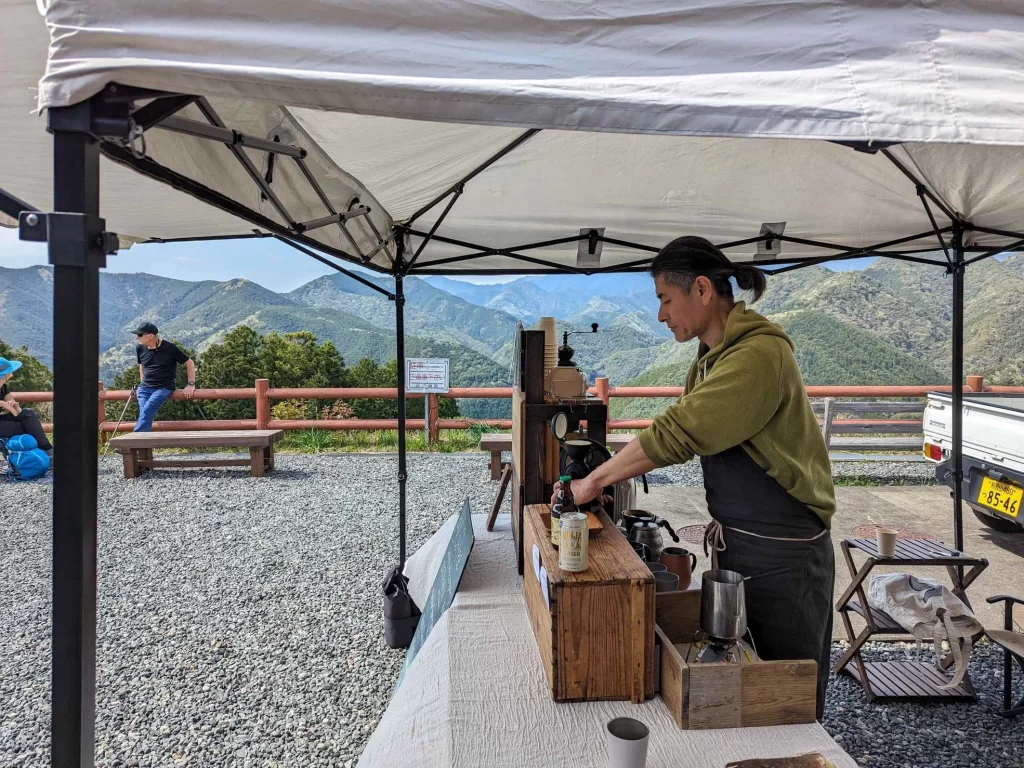
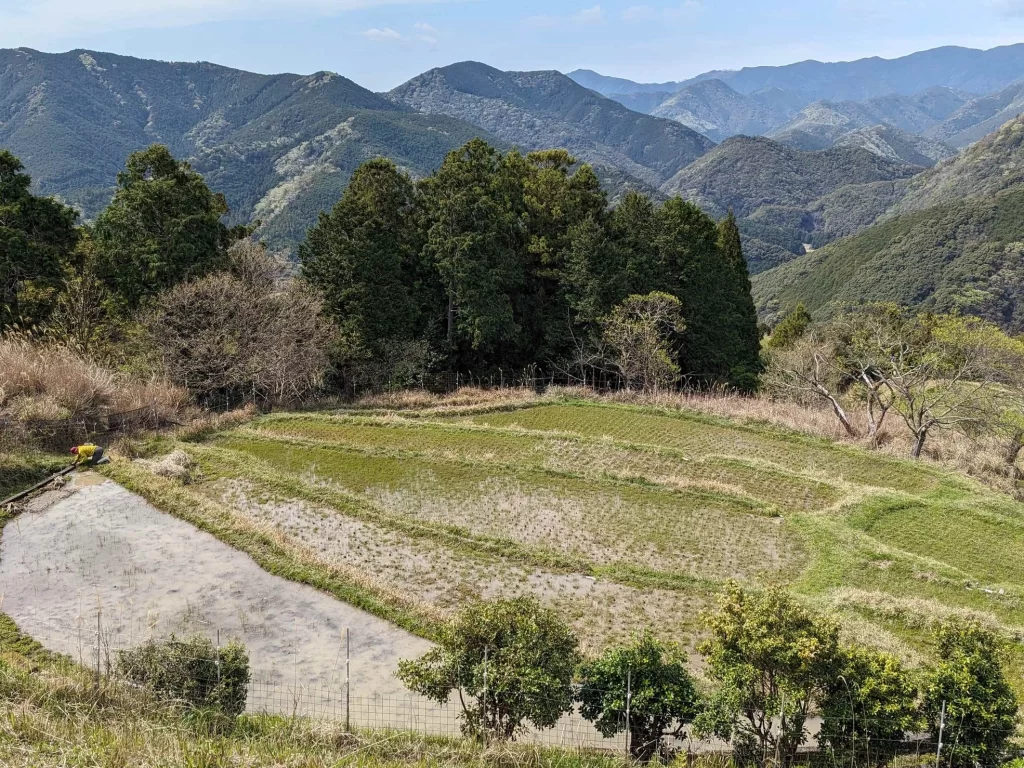
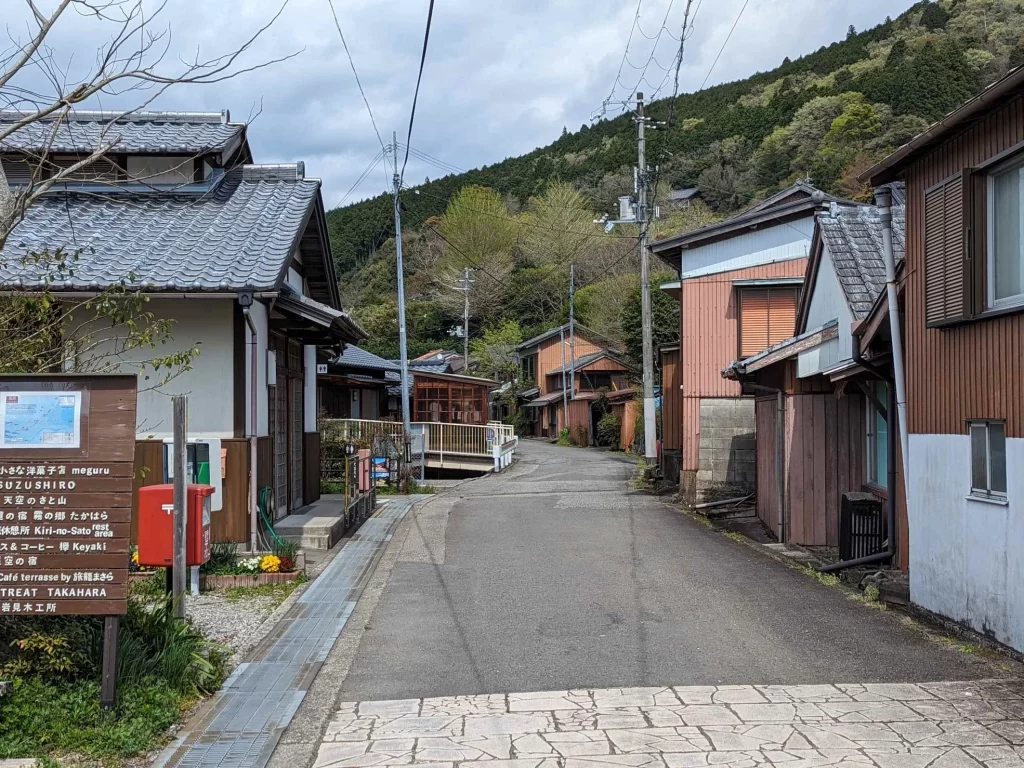
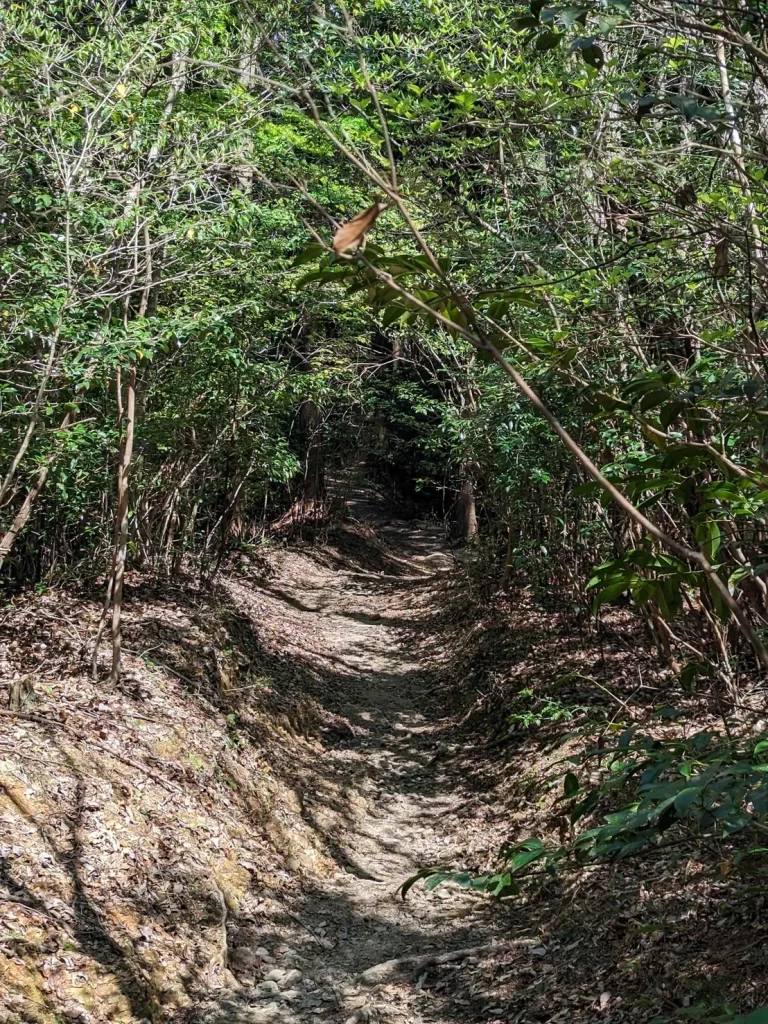
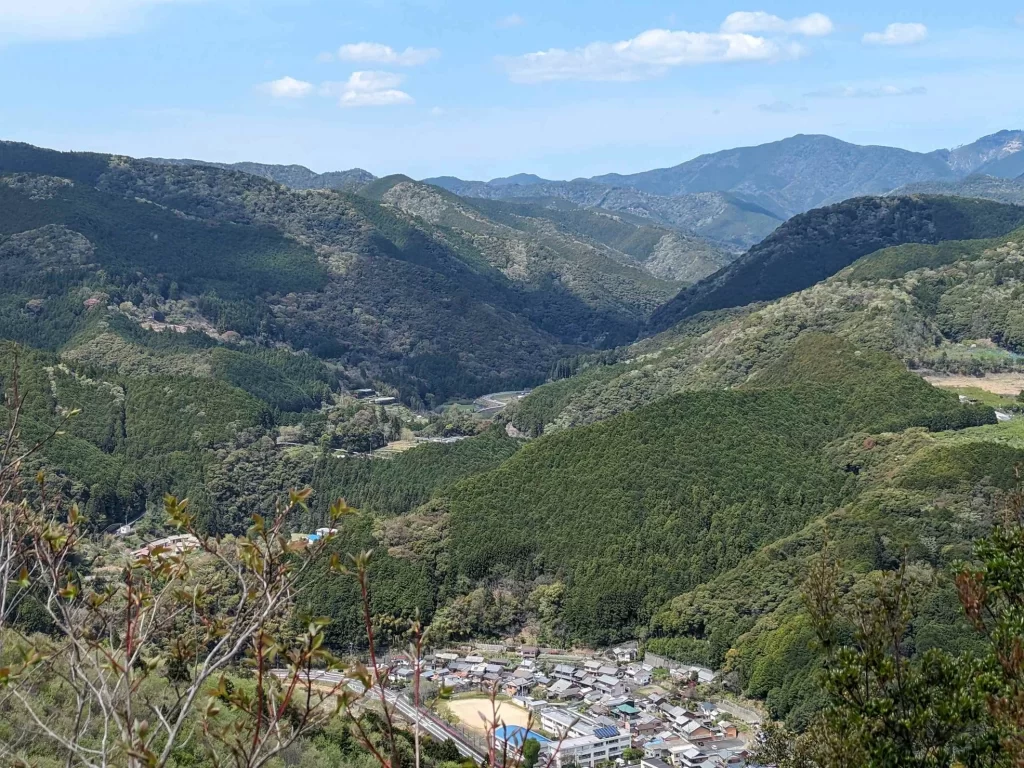


While we were waiting for our cuppa, we were distracted by the arrival (by car) of the assistant minister of tourism, from Tokyo, together with a few lackeys from the local ministry of tourism office, on a fact finding mission, checking out the local infrastructure. Or he’d heard about this great coffee cart on top of a hill. Not sure which.
After our long break the path continued along the mountain ridge until we arrived to Takahara, a quaint mountain village. We actually had intended to continue walking another four hours to Chikatsuyu, where we would be spending the night, with some steep ups and downs but through more beautiful and varied surroundings, but it was getting just a bit late to try to achieve four more hours of walking. To be honest, whilst we truly had intended to do the extra kilometres, it was also in our minds that the following day was the really hard day, 17 km of mountain walking, so it wasn’t so bad that we missed today’s extra walk. At least three of us had this mindset. Garry, the mountain goat of the group, just starts to warm up at the ten kilometre mark, and he was a bit peeved that he’d missed ten km of extra walking.
Takahara to Chikatsuru
So instead, we walked 40 minutes to a bus stop where we would board a bus that would take us to Chikatsuru. We had a twenty minute wait for the bus, safe in the knowledge that if the bus was scheduled to arrive at 3.40, it would be there at 3.40. Not ten seconds before and not ten seconds after. Japanese punctuality makes the Swiss look slovenly. 3.40 came and went. 3.50… Nothing. No bus. We were starting to worry that maybe the bus wasn’t coming, even after we had checked the route, timetable and bus number online, confirming that we were at the correct bus stop. At 4.10 the bus arrived and delivered us, safe and sound, to Chikatsuyu. To this day we cannot fathom how or why there was a half hour delay. We fully expect the bus driver to arrive home after work and commit ritual harakiri.
It’s hard to say how many km we had walked today, as we were noticing an enormous discrepancy between the Google fitness app on my phone, the Apple fitness app on Yoni’s phone and the Chinese fitness app on Simon’s watch. I’m quite sure that Google, Apple and the Chinese have stored the information somewhere, ready to use it or sell it to their advantage. In any case, Google and Apple can’t even agree on how far we walk. Garry’s internal body-clock fitness app merely said we hadn’t walked nearly enough.
Chikatsuru
Chikatsuru was the first place we found on the shvil where we saw a tourism influence. It really is a quaint little town, sort of a Japanese version of a small Italian village, with a main street, a few small streets or lanes branching off, and in this case, a river slightly below the village. A village this size might have had perhaps a small general store, a temple or oji, and nothing more. But in Chikatsuru, there were a couple of general stores, a few coffee shops, some shmonsey clothing and tourist souvenir shops and the regional office of Oku, the tour company that had thus far done a fantastic job organizing our trek. I am happy to say that the village didn’t seem to have been ruined by commercialization. I guess the number of tourists coming through is in the tens per day, not thousands, and that it is essentially a village on a pilgrimage route, so those same tourists will hopefully have a level of cultural respect and awareness.
On our first night on the shvil, we stayed at a perfect guest-house. Second night, the accommodations and food were perhaps not quite as much of a “wow” experience but we did have beautiful views over Wakayama Bay. Tonight we were in the mountains, our minshuku (another type of inn, different from a ryokan in a way that escapes my understanding) was nestled by a river, with a backdrop of mountains in the not very distant distance.
We were horrified to find other pilgrims sharing our beautiful accommodations, our riverside comfy chairs and dining table with us. We had become very comfortable being the only guests at our previous accommodations on the less traveled Kijjii route. Now that we had started the Nacahechi pilgrimage highway, we saw maybe 15 people over the course of the day, and tonight another 8 or so people at the guesthouse. We feared that we would have to be, gasp, social. We succeeded in maintaining enough distance so as not to encourage too much small talk, and in any case, it’s hard to talk when your mouth is full and your mind is being blown away by yet another amazing meal.
If I need to be honest, many of the people on the trail were really not so different from us and actually proved to be quite interesting. And the by-the-river ambience of the place made up for any enforced sociability.
